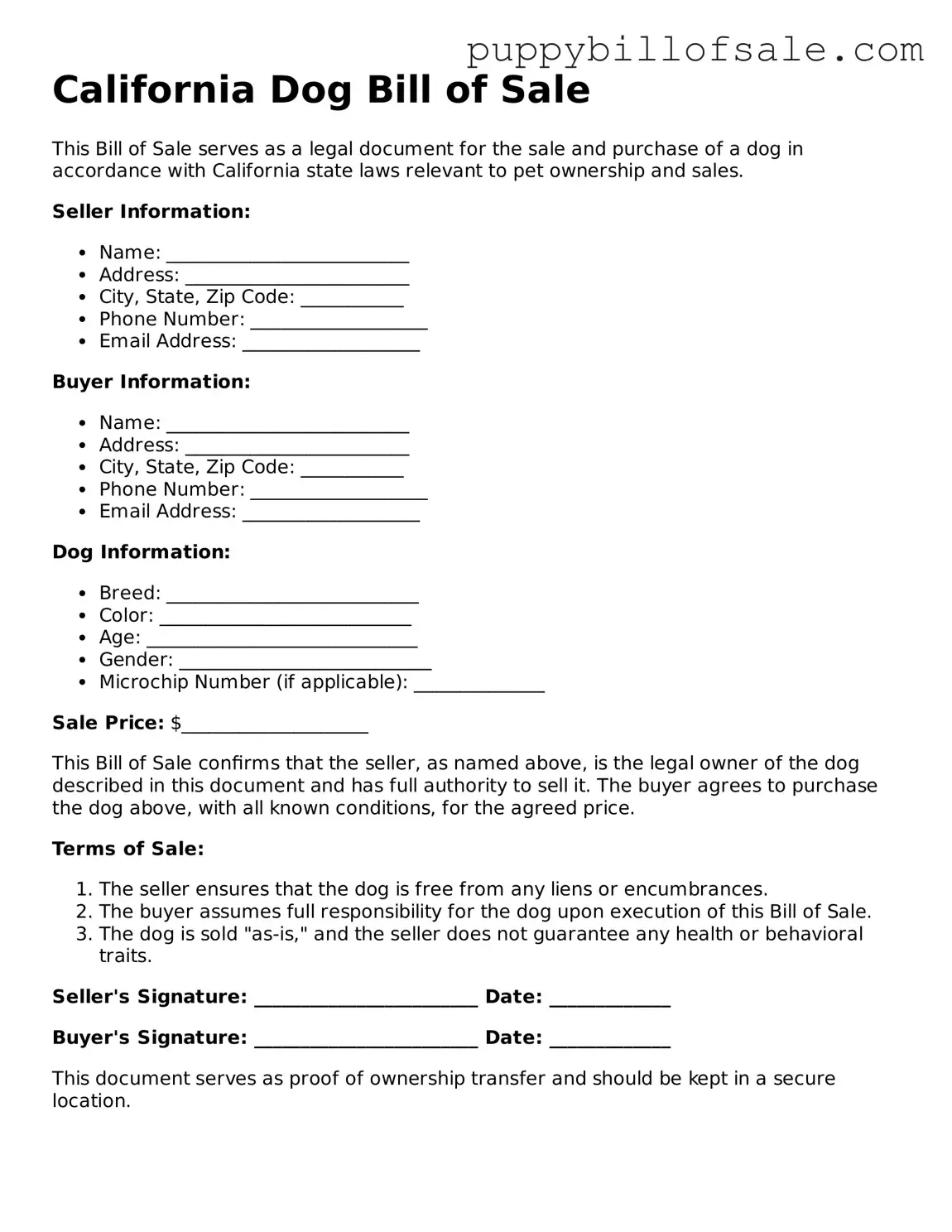Dos and Don'ts
When filling out the California Dog Bill of Sale form, it's important to ensure accuracy and completeness. Here are ten things to keep in mind:
- Do provide accurate information about the dog, including breed, age, and any identifying marks.
- Do include the seller's and buyer's full names and contact information.
- Do specify the sale price clearly.
- Do mention any health guarantees or warranties regarding the dog.
- Do sign and date the form to validate the transaction.
- Don't leave any sections blank; all fields should be filled out completely.
- Don't use nicknames or informal names for the dog; use the official name.
- Don't provide false information about the dog's health or history.
- Don't forget to keep a copy of the completed form for your records.
- Don't rush through the process; take your time to ensure everything is correct.
